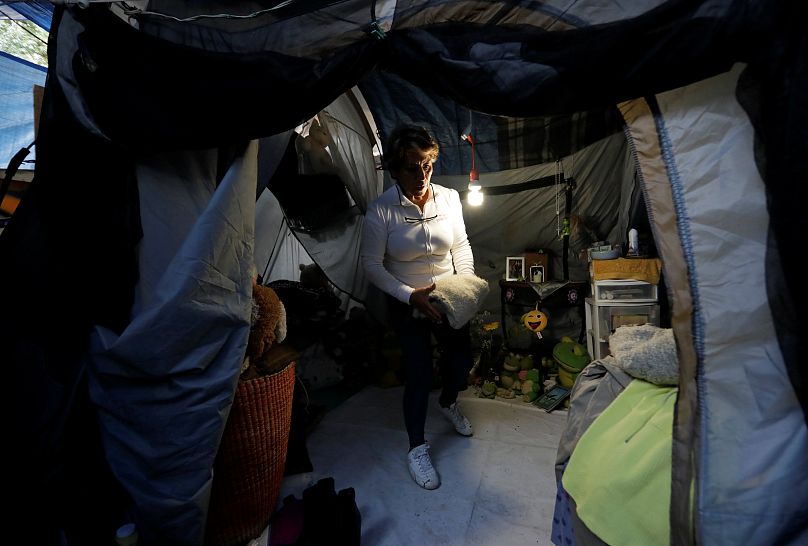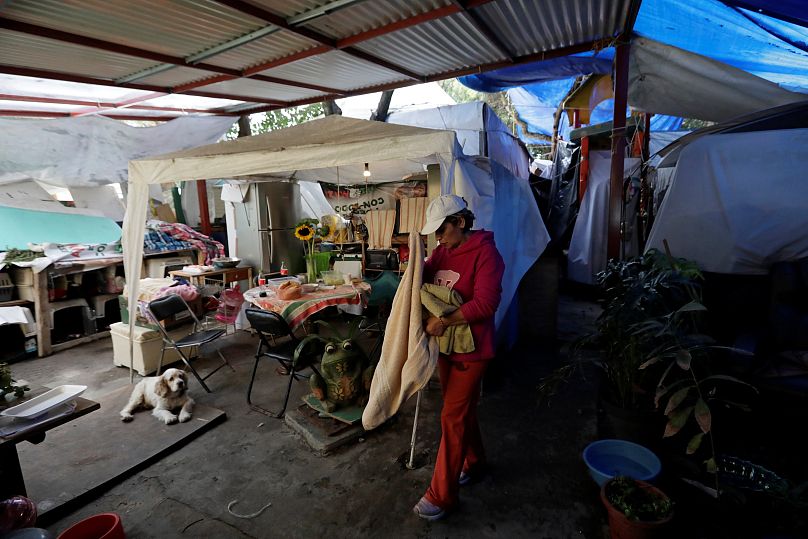One year on from after an earthquake struck Mexico City, families are still waiting to return to their home.
In early September last year, an 8.1 earthquake struck Southern Mexico, killing about 100 people.
Twelve days later on September 19, a 7.1 magnitude tremor shook the centre of the country, killing about 370 people.
A year later and families are still waiting to return to their homes.
President Enrique Pena Nieto's office on Tuesday said the government had provided aid to help rebuild 166,000 homes of more than 169,000 that were damaged, mostly in the south.
The Interior Ministry did not immediately respond to a request for comment on those left homeless.
However, 434 buildings in Mexico City are still at risk of collapse and over 1,000 require significant reinforcement before they can be reoccupied, the capital's government said.
Homeless
Guadalupe Padilla, a 60-year-old security guard has lived in a wooden shack in a park facing the now-empty apartment block where she spent three decades of her life.
Padilla is one of the hundreds of people in the capital who have been unable to return to their homes. She escaped and waited for the building to be repaired as concerned her apartment was dangerous after the second earthquake.
Many of the people interviewed said they are still waiting for assistance promised by the government.
Others are refusing to leave their homes, even if they are badly damaged, for fear they will be permanently displaced.
About three weeks ago, the building's management told Padilla to remove the rest of her belongings, without providing information about what lay ahead, she said.
"It's not fair for them to kick us out without explaining anything," Padilla said.
According to Reuters, they were unable to locate the managers of the building.
Tlalpan hit hard
The housing problem is felt in Tlalpan, a neighbourhood in the capital's south is heavily affected by the quake.
In the extensive housing estate known as Multifamiliar Tlalpan where Padilla once lived, one building collapsed, killing nine people, and the remaining towers were confirmed as not suitable for living in.
Some 500 families lost their homes, according to Citizen watchdog group Mexicans Against Corruption and Impunity (MCCI).
Padilla said the government has been more preoccupied with new development projects than looking after residents.
"After everything happened here, the construction mafia got started," Padilla said, referring to a wave of construction firms that she said came after the quake to redevelop the site.
MCCI said it found evidence of poor construction in the Tlalpan complex and other buildings that fell in the city, in a report published last week.
Residents had complained of severe structural damage before the quakes, the group said.
The MCCI discovered rather than heeding residents' complaints, city authorities slashed budgets for the buildings and continued to liberally grant construction permits.
City officials did not immediately respond to a request for comment about MCCI's findings and have not publicly commented on the report since it was released.













